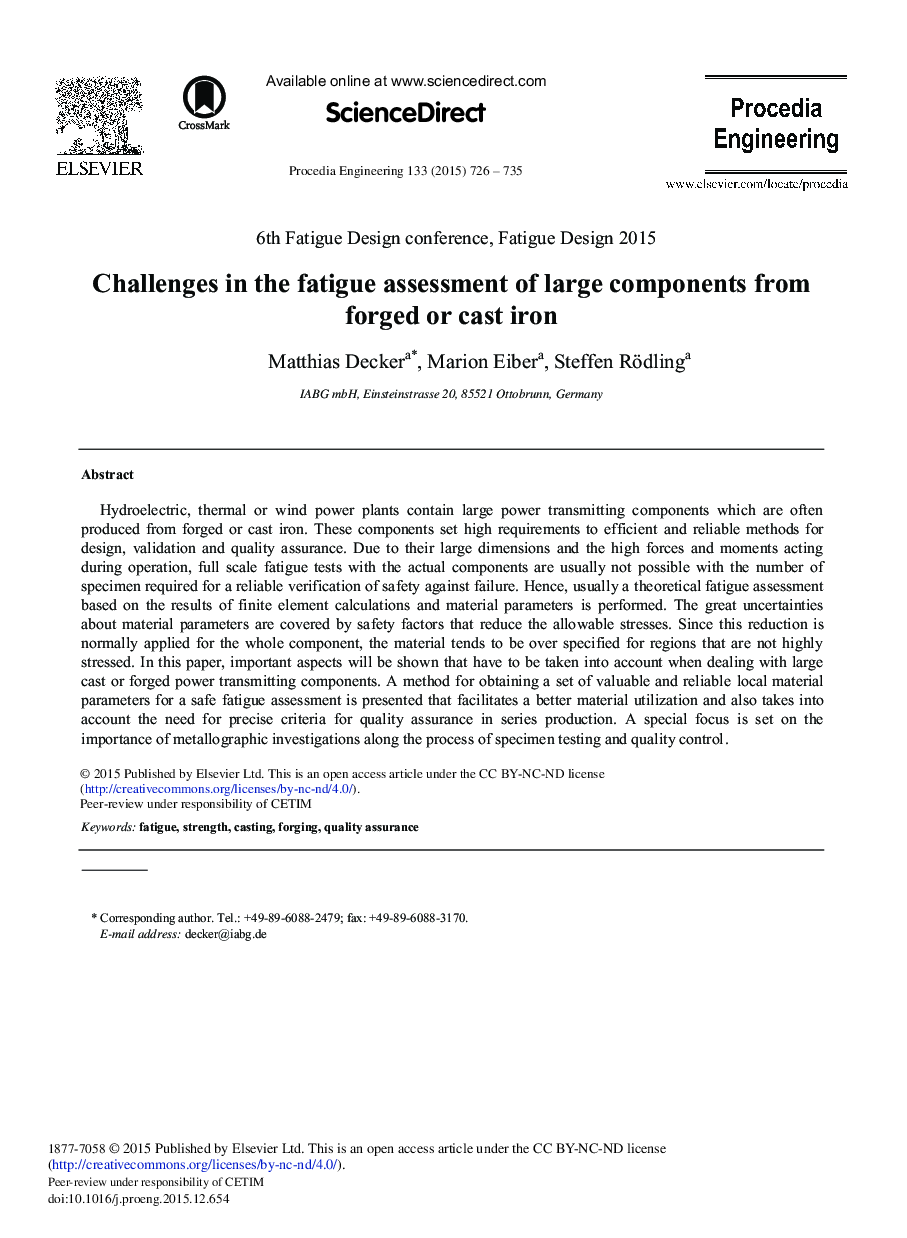| Article ID | Journal | Published Year | Pages | File Type |
|---|---|---|---|---|
| 853979 | Procedia Engineering | 2015 | 10 Pages |
Hydroelectric, thermal or wind power plants contain large power transmitting components which are often produced from forged or cast iron. These components set high requirements to efficient and reliable methods for design, validation and quality assurance. Due to their large dimensions and the high forces and moments acting during operation, full scale fatigue tests with the actual components are usually not possible with the number of specimen required for a reliable verification of safety against failure. Hence, usually a theoretical fatigue assessment based on the results of finite element calculations and material parameters is performed. The great uncertainties about material parameters are covered by safety factors that reduce the allowable stresses. Since this reduction is normally applied for the whole component, the material tends to be over specified for regions that are not highly stressed. In this paper, important aspects will be shown that have to be taken into account when dealing with large cast or forged power transmitting components. A method for obtaining a set of valuable and reliable local material parameters for a safe fatigue assessment is presented that facilitates a better material utilization and also takes into account the need for precise criteria for quality assurance in series production. A special focus is set on the importance of metallographic investigations along the process of specimen testing and quality control.
